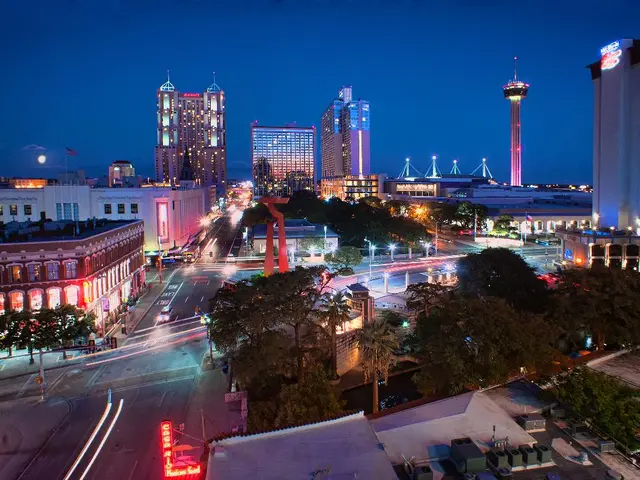🚢 New LNG Terminal in Stade: A Crucial Step Towards Energy Security and Climate Protection 🌬️
After a whopping 11-month build, the floating terminal for liquefied natural gas (LNG) has been handed over to Deutsche Energy Terminal and Hanseatic Energy Hub in the heart of Stade. 🇩🇪 Lower Saxony's Energy Minister, Christian Meyer (Greens), called it a building block for Germany's energy security and climate protection during the handover ceremony on board the MS Helgoland.
Economics Minister Olaf Lies (SPD) lauded the swift construction timeline of just 330 days, boasting Germany's ability to deliver projects at the proverbial 'new German speed.' Construction began on January 20, with a €300 million investment in the facility. However, due to the delayed arrival of the necessary special ship, the terminal will not be operational until February 2024.
Monthly, the terminal is expected to process around 50 LNG tankers, handling an annual five billion cubic meters of natural gas. The construction of the new LNG infrastructure is a direct response to Russia's invasion of Ukraine, with the aim of filling the supply gap created by the lack of Russian gas.
Let's dive a bit deeper into why this new terminal is so crucial. 🔎
Energy Security and Diversification
In the wake of Russia's unprovoked attack on Ukraine, Germany is actively seeking alternatives to its reliance on Russian gas. By investing in LNG infrastructure such as the new terminal in Stade, the country intends to strengthen its energy security and diversify its energy sources.
Climate Protection
With the Stade LNG terminal, Germany is not only securing its energy needs but also taking a significant step towards its climate protection goals. The terminal will handle not only LNG but also ammonia and green hydrogen, which are considered more environmentally friendly alternatives to traditional fossil fuels.
Proving Germany's Mastery in Delivery
330 days from start to finish. That's just over 10 months, making the construction of the Stade LNG terminal a testament to Germany's delivery prowess. Combine that with its commitment to energy security and climate protection, and you have a nation leading by example in the global quest for a sustainable future.
The Future of LNG in Stade
As Germany continues to expand its LNG infrastructure, the Stade terminal will remain a vital component. With the polar ice caps melting and climate change reaching a critical juncture, the need for alternative energy sources has never been more pressing.
With its new LNG terminal in Stade, Germany is not only showing its commitment to its own energy needs but is also sending a powerful message to the world: We can and will secure our energy future without compromising the environment.
🌿 Future reading:
Sources: | Enrichment data integrated throughout the article.








